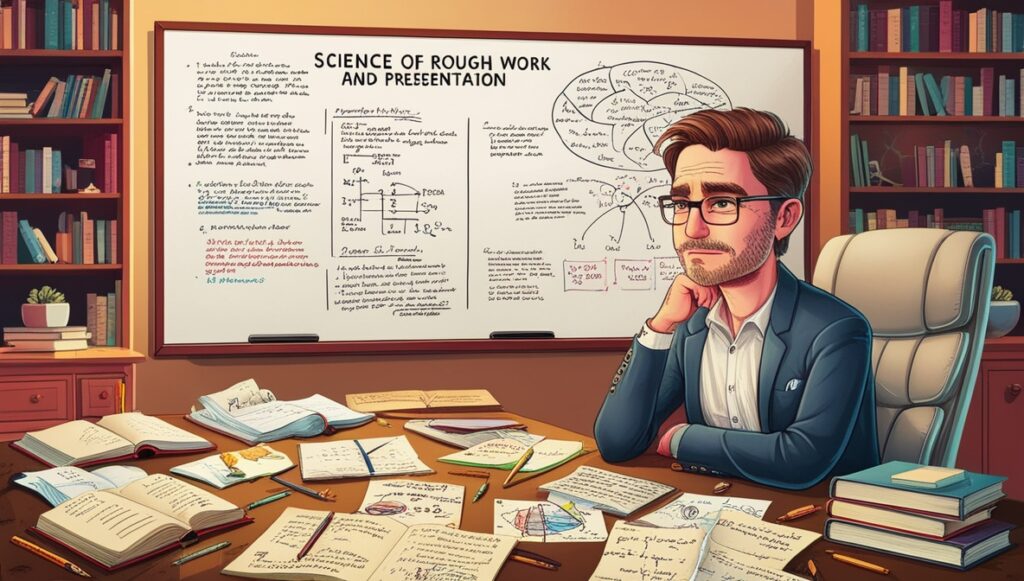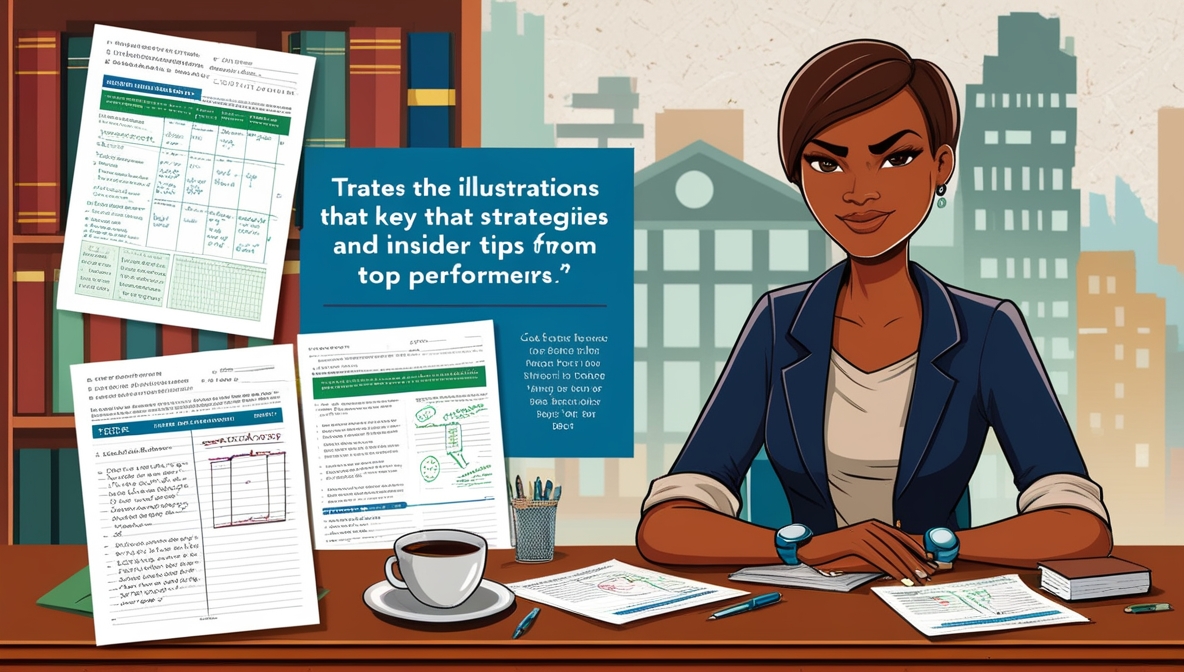Every year, while thousands of students study the same material and attend the same classes, only a handful emerge as toppers. What separates these exceptional performers from the rest? After analyzing strategies from hundreds of top-scoring students across various competitive exams and academic levels, a clear pattern emerges: it’s not just about knowing the content—it’s about mastering the art of attempting the exam paper itself. This comprehensive guide reveals the closely guarded strategies that toppers use to maximize their scores, manage time effectively, and maintain composure under pressure.

The Pre-Game Ritual: First Five Minutes That Make or Break Your Performance
Top performers universally agree that the initial minutes after receiving the question paper are crucial. Instead of immediately diving into writing, toppers invest these precious moments in strategic planning. They quickly scan the entire paper, not to read every question in detail, but to get a mental map of what lies ahead. This bird’s-eye view prevents nasty surprises and allows for intelligent time allocation.
During this initial scan, toppers mentally categorize questions into three buckets: easy wins (questions they can answer quickly and confidently), moderate challenges (requiring more thought but within their capability), and difficult sections (requiring maximum time or carrying risk of errors). This triage system, borrowed from medical emergency protocols, ensures they secure maximum marks in minimum time.
Sarah Chen, who topped her medical entrance exams three years running, shares her approach: “I spend exactly four minutes reading through everything. I mark questions with tiny symbols—a star for easy, a circle for medium, a triangle for hard. This visual system means I never waste time deciding what to attempt next during the exam.” This systematic approach eliminates decision fatigue during the crucial examination hours, allowing toppers to focus their mental energy entirely on solving problems rather than choosing them.
The reading time also serves another critical purpose: identifying questions with multiple parts or hidden requirements. Toppers know that missing a sub-question or overlooking specific instructions can cost valuable marks. They underline key command words like “compare,” “analyze,” or “evaluate,” ensuring their responses align perfectly with what examiners seek.
Strategic Question Selection: The Art of Choosing Your Battles
Unlike average students who typically attempt questions in the order presented, toppers follow a sophisticated selection strategy. They begin with questions that offer the best return on investment—those that carry high marks relative to the time and effort required. This approach, which top performers call “mark maximization,” ensures they secure their foundation before tackling challenging territory.
The psychology behind this strategy is sound. Starting with familiar questions builds confidence and momentum. This positive psychological state enhances performance on subsequent difficult questions. Moreover, securing easy marks early provides a safety cushion, reducing anxiety about time constraints later in the exam.
Top-scoring students also understand the concept of “partial credit optimization.” In subjects like mathematics or physics, they might attempt all parts of a multi-step problem they’re confident about, even if they’re unsure about the final steps. This approach ensures they collect partial marks rather than abandoning entire questions. As one engineering topper explains, “A 60% attempt on five questions scores higher than 100% on three questions. The key is knowing when to move on.”
Interestingly, toppers avoid what they call the “perfectionist trap”—spending excessive time perfecting answers to questions they know well while leaving others unattempted. They understand that the difference between a good answer and a perfect answer might be two marks, but attempting an additional question could yield ten marks. This pragmatic approach to mark allocation distinguishes strategic test-takers from merely knowledgeable students.
Time Management: The Mathematical Precision Behind Success
Toppers approach time management with mathematical precision. They don’t just have a vague sense of pacing—they calculate exact time allocations. The formula is straightforward but religiously followed: total time minus ten minutes (reserved for review) divided by total marks, multiplied by marks per question. This gives them a precise time budget for each question.
However, the real sophistication lies in how they implement this framework. Toppers use what they call “time banking”—if they complete a question under budget, they bank that time for challenging questions later. They maintain a running mental tally, checking their watch at regular intervals to ensure they’re on track. This disciplined approach prevents the common scenario where students spend an hour on the first half of the paper only to rush through the remainder.
Marcus Williams, a consistent topper in law examinations, reveals his technique: “I write the time I should finish each section directly on the question paper—9:15, 9:35, 10:00. These checkpoints keep me honest. If I’m behind schedule, I wrap up immediately and move on, even if I have more to write.” This disciplined adherence to time boundaries requires practice but pays enormous dividends during actual examinations.
Top performers also factor in what they call “transition time”—the seconds spent moving between questions, turning pages, or switching mental gears between different topics. They account for these micro-delays in their planning, ensuring their theoretical time allocation matches practical reality.
Answer Structure: The Architecture of High-Scoring Responses
The way toppers structure their answers reveals a sophisticated understanding of examiner psychology. They know that examiners often grade dozens of papers in succession, spending mere minutes on each answer. Therefore, toppers make their responses scanner-friendly, ensuring key points are immediately visible and impressive.
Every high-scoring answer follows a deliberate architecture. The opening sentence directly addresses the question, providing a clear thesis or definition. This immediate relevance signals to examiners that the student understands what’s being asked. The body paragraphs follow a logical progression, each beginning with a clear topic sentence that could stand alone as a partial answer. This structure ensures that even if examiners skim, they encounter all major points.
Toppers are particularly skilled at what they call “strategic highlighting”—using formatting to guide examiner attention. They underline key terms, number their points clearly, and use transitional phrases that create coherent flow. In subjects requiring diagrams or calculations, they present these elements prominently, often boxing final answers or key conclusions. As one mathematics topper notes, “The examiner should be able to follow my logic even if they only read the first line of each paragraph and look at highlighted elements.”
The conclusion serves a specific purpose in high-scoring answers—it’s not merely a summary but a demonstration of higher-order thinking. Toppers use conclusions to show synthesis, evaluation, or application beyond what the question directly asked. This extra step, taking perhaps thirty seconds to write, often distinguishes exceptional answers from merely correct ones.
The Science of Rough Work and Presentation
While most students treat rough work as throwaway scribbles, toppers understand its strategic value. In subjects requiring calculations or complex reasoning, well-organized rough work serves multiple purposes. First, it provides a reference if they need to revisit their thinking. Second, in many exam systems, examiners award partial credit for correct methodology even if the final answer is wrong.

Toppers maintain what they call a “rough work protocol.” They clearly label each attempt, use consistent notation, and strike through (never scribble out) abandoned approaches. This organization means they can quickly locate and transfer correct work to their final answer. One physics topper shares, “My rough work is so organized that if I run out of time, I simply write ‘Please see rough work on page X’ and often receive most of the marks.”
Presentation extends beyond mere neatness. Toppers understand that illegible handwriting or chaotic layout creates examiner frustration, potentially affecting scoring even unconsciously. They maintain consistent handwriting size, leave adequate margins, and ensure spacing between answers. While they write quickly, they never sacrifice basic readability for speed.
The strategic use of space also distinguishes top performers. They leave gaps between paragraphs for potential additions during review, start new questions on fresh pages when possible, and clearly number all sheets. These practices seem minor but collectively create a professional impression that can influence examiner perception, particularly in subjective evaluations.
Managing Cognitive Load and Stress During the Exam
Toppers have sophisticated strategies for managing the mental challenges that arise during examinations. They understand that cognitive fatigue is inevitable during long exams, so they build in micro-recovery periods. Every twenty minutes, they might pause for ten seconds, close their eyes, and take three deep breaths. This brief reset prevents the accumulation of stress and maintains mental clarity.
When encountering difficult questions, toppers employ what they call the “two-minute rule.” They give themselves exactly two minutes to make progress. If they’re still stuck, they mark the question and move on, returning only if time permits. This prevents the common trap where students waste twenty minutes on one challenging problem while easier marks remain unclaimed.
Top performers also manage their internal dialogue carefully. Instead of thinking “I don’t know this,” they reframe as “What do I know that relates to this?” This positive cognitive approach often unlocks partial solutions. They’ve trained themselves to remain calm when facing unexpected questions, understanding that if they find something difficult, likely many others do too, and the curve will reflect this.
The physical aspects of stress management aren’t ignored either. Toppers maintain good posture to prevent fatigue, stay hydrated with small sips of water, and use permitted snacks strategically for energy boosts. They know that physical discomfort can impair cognitive performance, so they dress in layers for temperature adjustment and ensure they’re physically comfortable before beginning.
Advanced Techniques: The Edge Strategies of Elite Performers
Beyond fundamental strategies, toppers employ sophisticated techniques that provide marginal gains. They use “question echoing”—deliberately incorporating the question’s exact phrasing into their answer’s opening. This technique ensures perfect relevance and demonstrates careful reading. In essay subjects, they might even restructure the question into their thesis statement, guaranteeing alignment with examiner expectations.
Memory palace techniques feature prominently in topper strategies for fact-heavy subjects. During the exam, they mentally walk through prepared memory palaces to retrieve information systematically. One history topper describes visualizing a familiar building where each room contains information about different historical periods, allowing rapid, organized recall under pressure.
Toppers also master the art of “strategic guessing” in multiple-choice sections. They understand probability and use elimination techniques systematically. They know when to guess (when they can eliminate at least two options) and when to skip (when all options seem equally likely). This mathematical approach to uncertainty management often yields several additional marks.
The concept of “answer cross-pollination” is another advanced technique. Toppers remain alert for information in one question that might help answer another. A data interpretation question might provide statistics useful for an essay question, or a case study might contain principles applicable elsewhere. This holistic approach to the exam paper as an interconnected document rather than isolated questions occasionally provides crucial insights.
The Review Phase: The Final Polish That Secures Every Mark
The last ten minutes of any exam are sacred for toppers. They stop writing new content and shift into review mode. This phase isn’t about proofreading for spelling errors—it’s about capturing forgotten marks. Toppers have a systematic review checklist: Have all questions been attempted? Are all sub-parts answered? Are units included in scientific answers? Are all sheets properly numbered?
During review, toppers look for what they call “quick wins”—places where thirty seconds of addition could gain marks. Perhaps they forgot to label a diagram, missed a unit conversion, or could add one more relevant example. These minor additions, impossible to make if they’d written until the last second, often represent the difference between very good and exceptional scores.
The review phase also involves strategic completion of partially attempted questions. If they marked several questions for return but have limited time, toppers don’t try to complete everything. Instead, they add bullet points, formulae, or brief conclusions that demonstrate knowledge and might earn partial credit. This pragmatic approach ensures no question is left entirely blank if any relevant knowledge exists.
Learning from Each Exam: The Continuous Improvement Mindset
What truly separates consistent toppers from one-time high scorers is their approach to post-exam analysis. Immediately after each exam, while memory is fresh, they conduct a mental debrief. Which strategies worked? Where did time management fail? Which types of questions caused unexpected difficulty? This reflection isn’t about dwelling on mistakes but about refining technique for future examinations.

Toppers maintain what they call an “exam strategy journal,” documenting successful techniques and failed experiments. Over time, they develop a personalized playbook adapted to their strengths and weaknesses. This systematic approach to improvement means each exam performance builds upon previous experiences, creating compound gains in effectiveness.
Conclusion: Excellence Through Strategic Execution
The strategies employed by toppers reveal a fundamental truth: exceptional exam performance requires more than subject knowledge. It demands strategic thinking, disciplined execution, and continuous refinement of technique. These students approach exams like professional athletes approach competition—with careful preparation, proven strategies, and mental resilience.
The techniques described here aren’t innate talents but learned skills. Any student can implement these strategies with practice and discipline. The key is to start incorporating them gradually, perhaps focusing on one or two techniques per exam until they become natural. Over time, these strategies compound, transforming not just exam scores but the entire experience of assessment from stressful ordeal to opportunity for demonstration of mastery.
Remember, becoming a topper isn’t about perfection—it’s about optimization. It’s about making intelligent choices under pressure, managing resources effectively, and presenting knowledge in the most advantageous way possible. These strategies, refined by countless successful students, provide a roadmap to examination excellence. The question isn’t whether these techniques work—thousands of toppers have proven they do. The question is whether you’re ready to implement them with the discipline and consistency that exceptional performance demands.



